Way back in the ‘90s, collectible card games (or CCGs) were a big deal. Wizards Of The Coast had hit it big with Magic: The Gathering and they were hoping they could get lightning to strike twice with a brand new game. Or several new games, like Xena: Warrior Princess, Netrunner, C-23, and many, many more.
But It turns out it’s really hard to get lightning to strike on command. While Wizards was frantically creating as many CCGs as possible, they eventually reached out to FASA to make a BattleTech card game. And so, in 1996, the BattleTech CCG was born.
I’d like to say that it was just as big as Magic was; that it was just as creative, just as colorful, and just as successful, but it wasn’t. The game lasted through about 5 years of official support from the manufacturer, and then like so many unsuccessful card games from the era, it sort of just disappeared.
But not entirely. The BattleTech CCG is still around, and people still play it in their socially distant way. There are even people making unofficial expansions and suggesting that BattleTech (the CCG) could become a living game just from fan support alone.
I guess I should say right off the bat that I really hope this happens. I loved the BattleTech CCG when I was a kid perhaps even more than I loved the tabletop and Clix-based games combined. There’s just a certain magic to trading cards that’s hard to describe--it’s like holding something that’s part playing figure and part tiny TRO. I sometimes still find myself going through my old collection just to see the art one more time.
So today on Did You Know, I bring you my ode to the BattleTech CCG. A retrospective look at where it came from, where it went, and where it might go from here.
Making The BattleTech CCG
There’s really no way to discuss BattleTech without first touching on Magic: The Gathering. Magic, as it’s often shortened, was a phenomenon that put Wizards Of The Coast on the map. It became so massive that almost 30 years later, Magic is still being played both online and on tables all over the world.
Rather than pour all their resources into making Magic: The Gathering as good as it could be, Wizards set their sites even larger. They wanted collectible card games targeting genres beyond just the high fantasy tropes that Magic relied upon, and science fiction was one of those genres that Wizards definitely wanted to branch into.
Wizards reached out to two companies to make their sci-fi card game a reality. The first was Talsorian Games, makers of Cyberpunk 2020 (which will soon be adapted into the massive video game, Cyberpunk 2077), while the other was FASA. Noting the wild success of Magic and always up for another game product, FASA was quick to agree and a partnership was formed. Cyberpunk 2020 was adapted into Netrunner, while FASA got a collectible card version of BattleTech.
This is where things got handed over to Richard Garfield, prodigious card game maker and original creator of Magic, BattleTech, and many other tradeable/collectible card games. Garfield was certainly proud of Magic and its monumental success, but he never thought it was perfect. Deciding to do things entirely differently with his next game, Netrunner had virtually nothing in common with Magic and was, therefore, a complete flop upon release in 1996. This is mostly attributed to people coming from Magic who were expecting some similarities in the rules but were surprised to find none.
Having learned his lesson, Garfield decided to make BattleTech in a Magic-like mold but with some key differences. “With BattleTech,” Garfield said in an interview with the BattleTech CCG Facebook Group’s Michael Cohen, “we were starting to get pretty good with choosing what standards to break in order to generate the most play interest and flavor accommodation.”
Magic players found a lot in common with BattleTech. The tap mechanic reappeared to designate when a card had been used for that turn; resources subbed in for Magic’s lands while “assets” replaced Magic’s color wheel; the turn order followed a familiar sequence of events like untap, upkeep, draw, and attack; and of course, ‘Mechs were used in place of summoned creatures to attack your opponent.
However, BattleTech differed from Magic in a number of ways. Rather than attacking an opponent’s “life total,” players could send ‘Mechs to attack anything on the board from opposing ‘Mechs to resources (or “sites,” as they were referred to in-game). The ultimate goal was to run your opponent out of cards by attacking their “stockpile” (ie. their deck), meaning that every game had a built-in timer as each player draws two cards per turn--double the number of Magic.
There was one other major factor that set BattleTech apart from Magic. As a licensed property, Garfield and his developers had to work with FASA to create the game, and this caused quite a bit of tension during the development process.
“I worked with some folk at FASA and had dicey relationships with them,” Garfield recalls in that same interview. “In my opinion, they were not respectful of the needs of CCGs and wanted to make decisions which would make the game worse but fit their idea of the flavor. I am sure from their perspective I was not as thoughtful about the world and was willing to sacrifice the story to make what I thought was the best game.
“An illustration of that was the Clans: they wanted all the decks to be one Clan, and that simply doesn’t make sense for a CCG and it was like pulling teeth to get compromises made to make the game playable. Our eventual compromise was a larger number of neutral cards than they otherwise would have liked and framing of the Clan rules as an alternative way to play.”
Wizards and FASA eventually settled on the five Great Houses and the invading Clans as the initial factions available, along with keywords for certain mercenary groups such as Wolf’s Dragoons and the Kell Hounds, and another for ComStar. The initial rules didn’t even require decks to stick with a single faction other than House or Clan, and it wasn’t until much later in BattleTech‘s development did enough cards even exist to allow players to make competitive decks with only a single faction represented.
Richard never got to see that eventuality. As Wizard’s chief game designer, he and his primary development team had already moved on to the next project after the first core set of 283 BattleTech cards was released in 1996. In Garfield’s view, it became clear that “our development team after the first set didn’t have nearly the support they needed” to keep up with the problems that soon appeared as BattleTech hit store shelves.
BattleTech: The Early Years
Problems with BattleTech started appearing almost immediately. It became clear that the game was designed only with casual collectors in mind and as soon as enthusiasts started organizing tournaments and battling it out with 60-card decks, BattleTech had serious flaws that could be exploited for a competitive advantage.
In the initial rules, there was no limit to the number of any particular card that could be placed in a player’s deck. This likely would have been a minor issue had the Counterstrike expansion not arrived with a completely free ‘Mech (the Sentinel STL-3L) that required absolutely no resources to play. This meant any player could have had an entire deck made up of 60 Sentinels, played two per turn, and simply overwhelmed their opponent.
By the time Wizards Of The Coast held BattleTech‘s first official tournaments in 1997, the rules had been updated to limit decks to only six of any given card, but the strategy of swarming opponents with low-cost units remains popular in BattleTech even to this day.
However, we don’t even need to get to BattleTech‘s first World Championship tournament to see another flaw in the game, and that’s the inherent advantage that fast ‘Mechs have over moderate and slow ‘Mechs.
Because fast ‘Mechs can attack anything slower than they are (ie. moderate and slow ‘Mechs), a pack of cheap, fast ‘Mechs can pick off moderate and slow ‘Mechs, denuding an opponent of defenses should they lack their own fast ‘Mechs to counter. This wouldn’t be a problem if each faction had an equal distribution of ‘Mech speeds, but because BattleTech is set essentially during the Clan Invasion, the vast majority of efficient fast ‘Mechs were Clan, while Inner Sphere ‘Mechs were moderate or slow.
Fast Clan quickly formed as a winning strategy that allowed decks full of fast clan ‘Mechs to pick apart Inner Sphere opponents who were virtually defenseless. Cards like Effective Groundwork and Elite MechWarrior supercharged this strategy to the point where no other deck was even competitive, resulting in those cards being banned along with the infamous Dasher D.
Even still, Peter Sundholm’s Fast Wolf deck, filled with Dasher and Fenris Primes, was BattleTech‘s first-ever World Championship-winning deck, and it would go on to define the Fast Clan deck archetype from that point onward.
If 1997 was the year of Fast Clan, 1998 was the year of Inner Sphere Swarm. While swarm decks had always been a popular option in BattleTech, the arrival of the Arsenal expansion brought ultra-cheap, fast VTOL and hovertanks. Cards like the Cavalry, Cyrano, and Saladin finally gave Inner Sphere factions a fast unit that could be deployed before Fast Clan could send in their own fast ‘Mechs like the Dasher and Fenris, giving the Inner Sphere a distinct edge.
However, the BattleTech designers made the mistake of pricing these units too cheaply. Many of them could be deployed for free without even taking up one of the player’s precious two deployments, making the Vehicle Swarm Deck an insurmountable force. Wizards Of The Coast quickly changed the rules again to limit decks to just 10 non-‘Mech units to keep competitive play even remotely fair.
Ten non-‘Mech cards were more than enough to crush Fast Clan when they were combined with the ludicrously cost-efficient Nightsky NGS-4S and the Sandhurst Royal Military Academy. Davion Sandhurst Royal Military Academy Swarm, as the deck would come to be known, swept the 1998 BattleTech World Championships taking both first and second place. In fact, the championship game was a mirror match-up with both Terry Border and Shiu-Yik Au playing the exact same deck.
BattleTech: Those Troubled Middle Years
It’s around 1998 that we can’t really talk about the evolution of card games without discussing the Internet. Suddenly, strategies, tactics, and above all, decklists could be publicly shared for everyone to learn, iterate, and in many cases, outright copy. Alpha Strike became the number one website for net-decking in BattleTech, with articles and tournament-winning decklists posted there for every BattleTech fan to see.
That’s not to say that all unique ideas immediately disappeared from BattleTech starting in 1998. Zvi Mowshowitz’s famous ‘Mechless deck made headlines by relying on subterfuge and BattleTech‘s few direct damage cards to eliminate opponents in a single, massive airstrike. Wizards Of The Coast also continuously pushed BattleTech fans on their own website to discover new strategies, such as the Quasimodo Deck that featured the mildly insane Hunchback IIC and its enormous Alpha Strikes.
But the internet meant that ideas traveled fast. Winning strategies were copied, tested, and then perfected soon after the release of each new set. And one of the things that became increasingly clear was that there wasn’t a lot of variation when it came to BattleTech’s best ideas.
Once again, we start 1998 off with several bans and errata. After the phenomenal performance of Sandhurst Royal Military Academy at Worlds, ComStar became its own faction so that it couldn’t be combined with efficient Davion medium ‘Mechs and overwhelm all opposition. Later errata would further clip Sandhurst’s power down to a level where an outright ban was deemed unnecessary, although it was still considered a powerful card.
And Sandhurst was hardly alone. Disguised Coordinates was a card so oppressively un-fun to play against that Wizards decided to outright ban it instead of issuing errata. Ditto the original NGS-4S Nightsky which was deemed so under-costed that it was banned in favor of a revised version with twice the resource price.
However, the original Nightsky wasn’t banned at first. This brings us to the mass confusion of Commander’s Edition, released in the summer of 1998. A sweeping revision of the game, not only did Commander’s Edition change BattleTech‘s card design to be more distinctive amongst Wizards’ other products, but it also attempted to correct some of the mistakes made in the initial printing. This resulted in a number of “revised” cards with adjusted resource costs, modified attack values, added keywords, or in some cases, entirely different rules text.
Not wanting to completely invalidate a player’s collection up to that point, Wizards ruled that both revised and un-revised cards were legal to play. This somewhat got around the six-card maximum rule in that it allowed players to play both versions of the card in the same deck. It also resulted in the somewhat hilarious possibility of playing a deck of 24 Owens despite the fact only two variants of the OmniMech were ever made into BattleTech cards.
Wizards would eventually see the lunacy of this compromise and declared that all older cards could only be played using the revised text. That said, competitive BattleTech was filled with confusion right up until the 1999 World Championship.
The 1999 BattleTech World Championship saw the rise of Marik GorgeMaster. A deck designed specifically to combat against Fast Clan and early swarm strategies, it used C3-equipped ‘Mechs to present an extremely tough defense that was further augmented by a sideboard filled with Rocky Gorge and Falsified Maps.
Falsified Maps allowed GorgeMaster to search for Rocky Gorge almost at will, while the Rocky Gorge itself would deal two damage to each attacking ‘Mech. This was enough to outright destroy Dashers and other free-deploy units common in Sandhurst Swarm decks while also severely weakening larger units, often to the point that they’d be forced to sacrifice themselves in a second attack.
What made GorgeMaster such a powerful deck at the time was how it specifically countered BattleTech’s best strategies but was adaptable enough to deal with others as well. However, it was an extremely difficult deck to play requiring immense knowledge of other decks and playstyles. GorgeMaster was the height of the BattleTech tournament scene. After that, it was all downhill from there.
The End Of BattleTech
The last expansion to arrive in BattleTech was Crusade, which took the collectible card game right up to the era of the reborn Star League and the Inner Sphere’s counter-invasion of Clan Smoke Jaguar. It saw the addition of a new clan, the Steel Vipers, as well as powerful Alliance cards that allowed players to use multiple factions in a single deck.
These Alliance cards dramatically enhanced the quality of existing strategies by not forcing decks to sacrifice quality in order to remain within the bounds of their faction. Now, Fast Clan had access to the best fast ‘Mechs from every Clan, whereas Solaris Contacts and swarm decks didn’t need to limit themselves to a single House.
Alliances were found in several top-placing decks in the 1999 World Championships. At the final Worlds tournament in 2000, Chad Edwards’ Invading Clans deck took first place using a mix of Crossbows and fast Clan Wolf ‘Mechs as well as Hidden Reserves and Improved Construction Facilities to simply out-pace his opponent both economically and tactically.
After that, the BattleTech card game was over. Wizards announced their intention to stop supporting the game with expansions after Crusade, and while they supported BattleTech‘s professional scene for a year or two, without new cards to keep the game fresh, both professional and casual players abandoned BattleTech for greener pastures (which was usually Magic: The Gathering).
And so the world moved on. Alpha Strike continued to operate for a couple of years before eventually closing up shop. The secondary market thrived for some time before dwindling to a trickle, although you can still find unopened boxes of BattleTech on sites like eBay and Craigslist.
But much like the tabletop game, BattleTech has a way of creating die-hard fans. The BattleTech CCG Yahoo Group maintained the largest depository of BattleTech articles, rulings, and card lists for over a decade before moving on to the BattleTech CCG Facebook Group. They’re still in operation today, where you can not only discuss the old BattleTech card game in whatever detail you want but also peruse an even larger depository of resources, including FAQs and starter decklists to bring new players into this very old game.
Not Quite As Dead As You Think
You’d think that a game that has been out of print for over 20 years would be extremely difficult to play. You’d also be mistaken.
To start, there are still unopened boxes of cards out there. If you’re not willing to pay the price for a dwindling resource, all the cards have been individually scanned and placed online in a number of locations, including here at Sarna. The legality of printing those scans onto new cardstock is questionable, but there are a number of sites online where you can print custom playing cards to bring BattleTech back from the dead.
But why bother with printing old cards when you can print brand new ones? Besides getting around the whole copyright issue, these unofficial expansions bring far more of the BattleTech universe into the trading card game than ever before.
You might remember Michael Todd from such glorious fan creations as the unofficial TRO 3028 and TRO 3049. Well, he’s also devoted a not inconsiderable amount of his life to making a fan-made BattleTech CCG expansion, and one that I absolutely adore. Mostly because it includes all of Unseen ‘Mechs, but also because there are several Locust variants that would make a Logistics-based Inner Sphere swarm deck absolutely busted.
Next, we have Michael Cohen and Chester Hendrix of the BattleTech CCG Facebook group. They jointly made an even more comprehensive fan expansion that includes not just the Unseen, but also Aerospace, ProtoMechs, tanks, and more Missions and Command cards than I can count. This is easily the largest fan expansion I’ve encountered, and one that’s definitely worth considering adding to your collection.
Renegade HPG’s Travis Gardner has also been hard at work creating custom cards over on his YouTube channel. Instead of focusing on entirely new cards, Travis seems to fall into a different camp within the BattleTech CCG community that believes BattleTech’s in-game resource pricing is fundamentally flawed and requires correcting in order to end the utter dominance of Fast Clan and Inner Sphere Swarm. To do that, he’s devoted several videos to creating ‘Mechs that are priced based on a formula developed by the community to ensure a fair playing field.
Expansions and revisions are great, but what if you just want to play the old game in the old way? Well, you’ve got two options. First, there’s Tabletop Simulator, where someone has helpfully created a BattleTech CCG add-on that lets you play with all those cards in a virtual space.
Unfortunately, Tabletop Simulator can be oppressively cumbersome to play virtual card games. Instead, the BattleTech CCG Facebook community recommends using Lackey, a free-to-play card game app that lets you play almost any old card game, so long as someone has the scans for it. You’ll need to spend some time getting the BattleTech plug-in for Lackey set up, but as always, Michael Cohen at the BattleTech CCG Facebook Group has got you covered.
Some Parting Thoughts, And Some Thanks
Unlike most of my articles, this one wouldn’t have been possible without the help of a few notable individuals and one group as a whole.
First off, I’d like to thank the BattleTech CCG Facebook Group for keeping this game alive long past its expiration date. I’d also like to thank Mark Roberts for maintaining a collection of scanned BattleTech memorabilia, including full-page magazine ads that have really added a nice touch of color to what would have otherwise been a pretty drab jaunt down memory lane. Kudos to Travis for putting me in touch.
And an even bigger thanks to Michael Cohen for interviewing Richard Garfield so I didn’t have to. You can read the whole interview over on the BattleTech CCG Facebook Group, but just be aware that he’s a guy who has spent more decades designing card games than I have spent breathing and he can’t really remember much of the nitty-gritty details of BattleTech anymore.
Also, literally any of the subjects I touched on over the past 3000 words or so could have their own 3000-word article, so I apologize if it seems like I glossed over some of the grittier topics covered here.
It’s probably safe to say that without the BattleTech CCG I would never have gotten into the BattleTech fiction, and without that, the BattleTech video games likely wouldn’t have resonated with me nearly as much as they did. I really do hope that this game sees a resurgence, either with more expansions or with a completely revamped pricing formula that makes it a little fairer for every faction.
And as always, MechWarriors: Stay Syrupy.
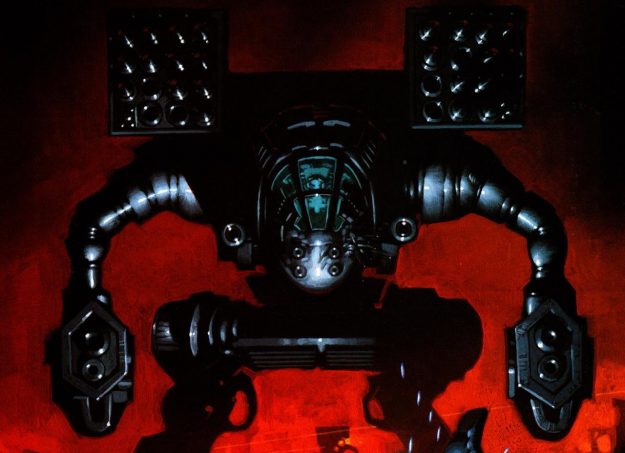
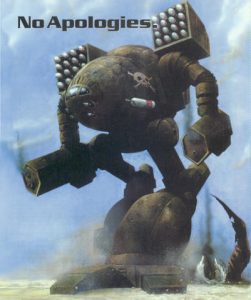
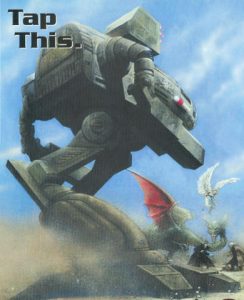


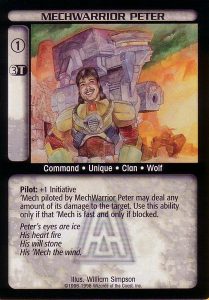



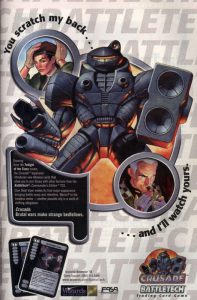
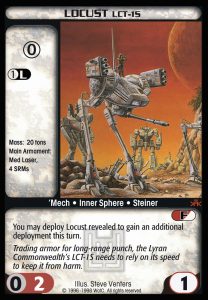
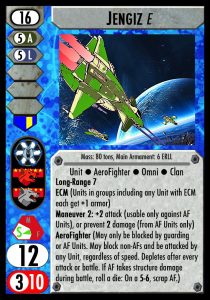
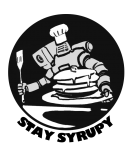
Speaking of Magic, with the Magic Set Editor free and open source program you could design cards for battletech CCG (its actually a universal card maker program).
Great. Now I have the urge to dig deep into my closet and find my complete set binder, just to look at all the cards one more time. Thanks for that. :+P
Nice article sir. Thanks
So much useful and interesting information in this “Report”! Thank you, I had no idea there were others out there creating these cards!
Um… given the obvious flaws, and the Muppet-flailing attempts to fix same, and the fact the game collapsed inside of five years: Please explain to me again in what alternate reality this forest-destroying pile of recycling could in any way whatever be considered “great”.
_M:TG_ accomplished exactly *one* task in its lifetime: It allowed Untalented But Rich Gamers to utterly annihilate Talented But Poor Gamers, making Gaming just like every other real-world “sport”. _MW:TCG_ and all the other attempts to “catch lightning in a bottle” didn’t even manage that much.
Hi there,
Michael Cohen here, admin of the Battletech CCG Facebook group.
Love the article, hadn’t seen it until just now.
Sean, could you please update the link for Tabletop Simulator to point to this mod instead:
https://steamcommunity.com/sharedfiles/filedetails/?id=1616342027
This is the mod that we are supporting for TTS. Lots of people have put together their own “upload the cards” mods, but this is the one I’m trying to guide people towards, with the most polish.
Thanks!
Can do!
Thanks!
Also, I recommend you remove the Github link for the Battletech CCG plugin from 2012. I’ve never seen it before and it’s hopelessly out of date. I host the current Lackey plugin, and the link you have for me “having you covered” is a good one. Though that said, this link is definitely the best place to get started, for TTS or Lackey:
https://www.facebook.com/groups/1428271947474537/permalink/2207632429538481/
I never got into this CCG, but I remember when Mech Commander 1 came out I got it (in a bundle with Mechwarrior 3) and the MC1 box included a booster pack of the Battletech CCG.
This game looks so weird … Is it like that for everyone, or am I the only one who’s used to card games usually having fantasy themes? For as long as I can remember, ever since I started to [play free online solitaire game](https://online-solitaire.com/russian-solitaire) and play regular cards, I’ve associated all board games with either UNO or Monopoly or something like fantasy, for example, Dungeons & Dragons. When was this game even released? Is it still released today? Judging by the look of the cards’ pictures, I think it’s something my parents might have played in their youth…
Thanks for sharing.
Thanks for sharing.